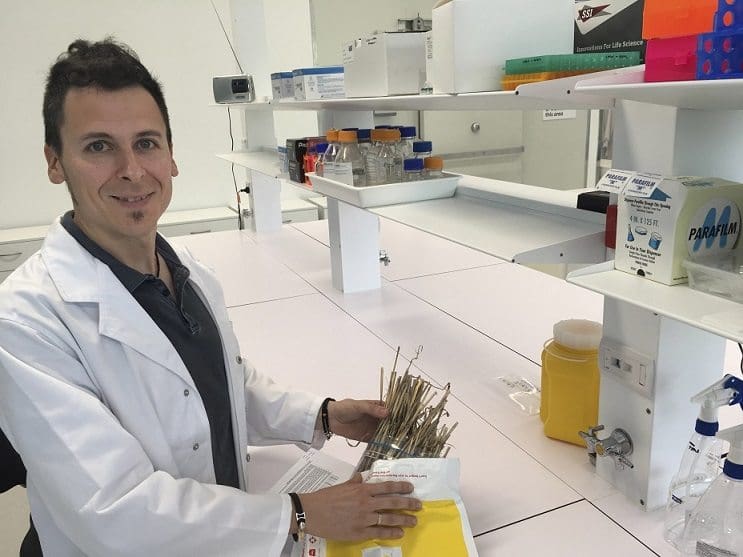THE discovery of fungicide resistance in the pathogen responsible for spot form of net blotch (SFNB) in Western Australia has alerted grain growers to implement integrated disease management strategies for barley crops this season.

Dr Fran Lopez-Ruiz leads the GRDC-supported and Curtin University-based Centre for Crop and Disease Management research team that has uncovered barley resistance in SFNB to some Group 3 DeMethylation Inhibitors (DMI) fungicides. (Photo: GRDC)
Analysis of 2017 crop samples from several paddocks in WA’s Esperance and South Stirling regions detected the resistance in the fungus pathogen Pyrenophora teres f. maculate (causing SFNB) to some Group 3 DeMethylation Inhibitors (DMI) fungicides.
These samples were collected by Department of Primary Industries and Regional Development (DPIRD) research officers and screened for fungicide resistance by the Centre for Crop and Disease Management (CCDM), which is a national research centre co-supported by Curtin University and the Grains Research and Development Corporation (GRDC).
CCDM Fungicide Resistance Group leader Fran Lopez-Ruiz said his team also observed reduced sensitivity towards fungicides from Group 3 fungicides in the Pyrenophora teres f. teres pathogen, which causes net form of net blotch (NFNB).
He said the level and frequency of resistance likely to occur in barley paddocks this season was uncertain and the focus was now to determine the extent of the potential problem in susceptible areas that may have heavy disease pressure.
Dr Lopez-Ruiz said recent concerns about fungicide performance in South Australian barley crops by growers and agronomists had also prompted rapid collection and analysis of SFNB samples from 2017 by the SA Research and Development Institute (SARDI).
“A mutation in the pathogen causing SFNB was found by CCDM and SARDI researchers and it was initially thought this could be associated with resistance to the new generation of Group 7 succinate dehydrogenase inhibitors (SDHI) fungicides,” he said.
However, further research found no SFNB pathogen resistance to SDHI fungicides.
Dr Lopez-Ruiz said the Group 3 resistance finding in SFNB in WA should act as a reminder to growers and advisers that it is best practice to implement a fungicide application plan as part of integrated disease management strategies for season 2018.
“Collectively we all have a role to play in protecting the longevity of our fungicides by using them responsibly, regardless of whether fungicide resistance is present in our own backyards or not,” he said.
For growers with DMI resistance – or suspected resistance – in their paddocks, Dr Lopez-Ruiz recommended avoiding the application of two consecutive applications of the same Group 3 fungicide active (either as a foliar or seed dressing) in one season, unless these were used in mixture with a different mode of action.
He said a Group 7 (SDHI) seed dressing could be used as a preventative measure, but advised on strict adherence to recommended label rates and application methods to achieve adequate fungicide coverage.
Dr Lopez-Ruiz also provided the following guidelines for fungicide use:
- Choose mixtures with different modes of action if available
- Alternate fungicides and never apply the same fungicide twice in a row
- Avoid applying the same mode of action twice
- If resistance is present or suspected, avoid or minimise the use of that mode of action as this will only further select for resistance
- Rotate crop types
- Grow resistant barley varieties to reduce disease pressure
- Use label rates to ensure adequate spray coverage.
More research with GRDC investment is being carried out into SFNB fungicide resistance and growers and advisers are encouraged to submit stubble and green plant samples of net blotches from all growing regions across Australia this season.
“This will help us better understand and monitor the extent of the situation and the frequency of the resistance nationally,” Dr Lopez-Ruiz said.
Sampling is best carried out through local plant pathologists and for more information, email the CCDM Fungicide Resistance Group directly at [email protected] or visit http://ccdm.com.au/.
Source: GRDC

HAVE YOUR SAY